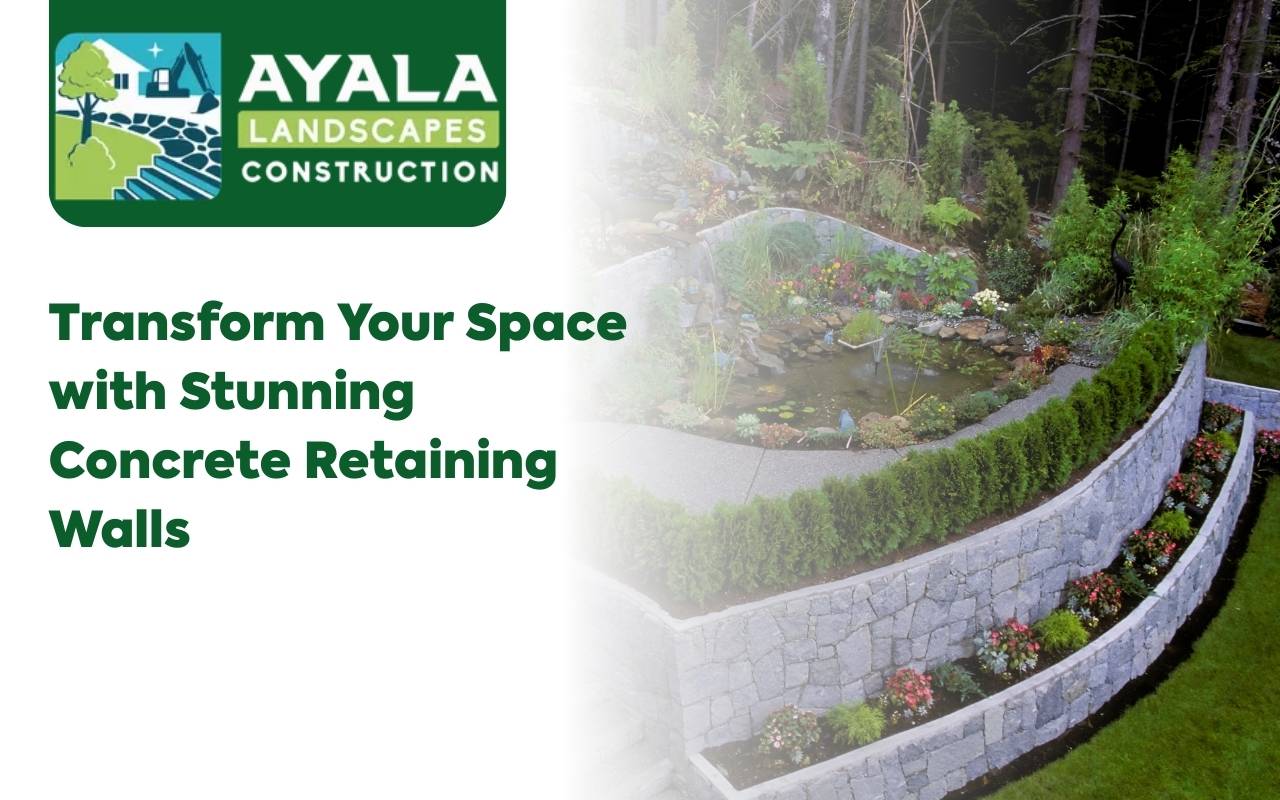
As urban landscapes evolve, demand for functional and stylish solutions rises. Concrete retaining walls meet this need with durability and design flexibility. They prevent erosion, define property boundaries, and elevate aesthetics. Moreover, their adaptability ensures any outdoor area becomes striking and modern. Whether managing slopes or enhancing borders, concrete retaining walls provide strength and elegance. Their versatility makes them ideal for both practical and decorative purposes. Ultimately, these walls combine engineering reliability with artistic impact.
The Evolution of Concrete Retaining Walls
Retaining walls date back centuries, originally built with stone or timber. With concrete’s invention, construction advanced significantly. Reinforced concrete introduced strength and adaptability, transforming wall design. Over time, mixes improved, resisting weather and supporting taller structures. Decorative finishes like stamping and colorants expanded possibilities. Consequently, concrete retaining walls transitioned from utilitarian barriers into design features. Today, innovations include textures, integrated lighting, and eco-friendly mixes. Thus, modern walls serve engineers and landscapers alike.
Practical Benefits of Concrete Retaining Walls
Functionality remains a core advantage. Concrete retaining walls counter soil pressures, stabilizing slopes and preventing erosion. Drainage systems can be incorporated to manage excess water. As a result, stability improves and hydrostatic pressure decreases. Durability is another strength. Properly built, walls last decades with minimal upkeep. Resistance to rot, fire, and insects ensures longevity. Additionally, modular blocks enable quick installation, while cast-in-place designs allow customization. Overall, they balance practicality, cost-effectiveness, and visual appeal.
- Prevent soil erosion on sloped terrain.
- Stabilize landscapes against heavy rainfall.
- Offer long-lasting durability with minimal maintenance.
- Adapt to modular or custom designs easily.
- Enhance outdoor beauty while solving functional issues.
For tailored solutions, explore our expert retaining wall services and discover craftsmanship that lasts.
Enhancing Outdoor Aesthetics with Concrete
The versatility of concrete retaining walls extends into design. Decorative form liners, stamping, and colors add elegance. Exposed aggregates introduce earthy textures. Additionally, polished finishes create glossy, upscale looks. Integrated planters soften hard surfaces with cascading greenery. These options transform walls into focal points that blend functionality with art. Consequently, concrete adapts to rustic gardens or contemporary yards. The result is durable beauty that elevates any landscape. Imagination is the only limit.
Design Options: Curving vs. Geometric
Curving walls follow natural land contours gracefully. They guide movement and soften elevation changes. These organic shapes provide welcoming transitions and visual harmony. Conversely, geometric walls emphasize crisp lines and strong angles. Their bold look complements modern architecture. Furthermore, geometric walls integrate seamlessly with patios or kitchens. Each style—curved or straight—requires precise planning and proper formwork. Ultimately, the choice depends on personal aesthetic goals and landscape needs. Both approaches deliver beauty and stability.
- Curving walls create natural, flowing transitions.
- Geometric walls emphasize precision and structure.
- Both styles can integrate with hardscapes.
- Curves suit organic gardens; geometry fits urban settings.
- Professional design ensures lasting performance.
Factors to Consider Before Installing Concrete Walls
Proper planning ensures success. Soil type and slope must be assessed carefully. Drainage patterns influence design choices significantly. Moreover, codes and permits regulate dimensions and placement. Site accessibility and underground utilities also matter. Aesthetic preferences influence finishes and textures. Addressing these considerations avoids costly errors. With informed preparation, your concrete retaining walls will perform effectively. Additionally, planning ensures the walls align with landscape goals. As a result, installations remain strong and visually impressive.
DIY vs. Professional Installation: Pros and Cons
DIY projects suit smaller, simpler walls. Pre-cast blocks or kits simplify construction for homeowners. However, careful attention to drainage and leveling is critical. Mistakes risk stability and longevity. Hiring professionals offers expertise and guarantees. Contractors bring equipment, engineering knowledge, and warranties. Furthermore, pros handle complex designs efficiently. Although costs increase, reliability and quality justify the expense. For larger projects, professional installation is highly recommended. Ultimately, choose based on project scale, skills, and expectations.
- DIY works for walls under three feet.
- Professionals ensure code compliance and durability.
- DIY saves labor but risks mistakes.
- Contractors manage complex curves and finishes.
- Warranty adds peace of mind with professionals.
Maintaining and Caring for Concrete Retaining Walls
Maintenance preserves performance and appearance. Inspect walls annually for cracks or chips. Seal imperfections promptly to prevent water damage. Apply protective sealers every few years. Cleaning with mild detergents removes stains safely. Ensure drainage systems remain unclogged and functional. If bulging or moisture issues appear, seek professional advice. With consistent care, concrete retaining walls retain strength and beauty. Moreover, attentive upkeep extends their life significantly. Consequently, maintenance ensures long-term reliability and satisfaction.
FAQs: Quick Answers About Concrete Retaining Walls
What makes concrete retaining walls durable? Their resistance to rot, fire, and insects ensures longevity and reliability, even in challenging environments.
Can I build concrete retaining walls myself? Yes, for smaller projects. However, larger or complex designs benefit from professional expertise.
How do these walls prevent soil erosion? They stabilize slopes, control runoff, and counteract soil pressures effectively, reducing erosion risks.
What design styles are available? Options include organic curves or bold geometric lines, tailored to complement your outdoor design vision.
Do these walls require ongoing maintenance? Minimal upkeep is needed. Regular inspections, sealing, and cleaning preserve structural integrity and appearance.
Elevating Your Outdoor Space with Concrete Walls
Concrete retaining walls merge practicality with visual impact. They manage landscapes, prevent erosion, and enhance property design. Whether DIY or professional, planning and maintenance matter. Incorporating curves, textures, or lighting transforms spaces beautifully. As a result, landscapes gain resilience and aesthetic value. Embrace their versatility to achieve durable outdoor improvements. For expert guidance, visit our landscape design services page. Or contact us today for a personalized consultation.
